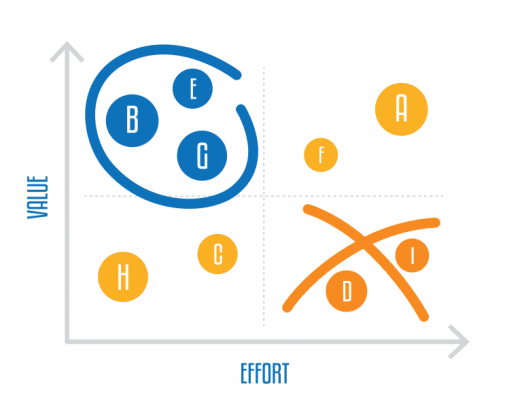This blog post will walk through the steps that can be used to create a roadmap for implementing a modern data warehouse (MDWH) in your organisation.
There is no doubt that a MDWH can provide a vast array of benefits to an organisation and deliver un-paralleled insight into your business but where do you start when embarking on an implementation?
Here at Adatis we have a great approach that ensures the roadmap delivers value quickly to your organisation and addresses requirements and pain points in an ordered fashion.
Step 1 – Gather requirements
This may sound obvious, but this step is key in understanding business drivers and strategic direction of your organisation as well as capturing the granular detail that can be used down the line in the build phase. To ensure that maximum value is delivered it is also important to understand your organisation’s strengths and weaknesses as this will help in the later prioritisation stage.
There are many ways to gather requirements and speaking to the key stakeholders and engaging with subject matter experts (SMEs) that use the data is the best place to start. This is an ideal time to start to create user stories that can also form part of your backlog. Gov.uk provide some good guidance to get you started if you are not familiar with how to write these.
Facilitated workshops are an excellent way to engage with stakeholders and help tease out the requirements and build up an understanding of what is required from the MDWH. Time to get out the post it notes!
Step 2 – Assign the requirements value and complexity scores
Once you have a good understanding of the requirements for your MDWH you can start to look at them in more detail and start to look at the value each one will deliver to the organisation as well as well as how complex each of them will be to implement.
There are lots of ways to size requirements and a good way to start is using T-shirt sizing or the Fibonacci sequence Wikipedia provides some useful detail on this. A game of planning poker is also a method that provides a bit of fun when carrying out this activity.
In terms of the value this can be attributed based on the wider understanding of the organisation and its goals and strategic direction it is a good idea to run this past key stakeholders and project sponsors to ensure everyone is aligned.
Step 3 – Grouping requirements
Now is the time to group the requirements into areas or themes. You may have a group of finance requirements and a group of HR requirements that naturally sit together as they use data from the same source systems or are from the same business function. Try not to create too many groups at this stage.
Step 4 – Prioritise your areas
Now you have requirements in themed areas with effort attached as well as business value you can start to formulate where on the roadmap the areas could sit. A good way to start is plotting on a prioritisation matrix as below:
This will immediately show you anything that can provide high value to the organisation with minimum effort. These can be delivered first and the value of the MDWH can start to be realised early in the roadmap. Low-value high complexity areas will obviously figure later in the roadmap and if working to an agile methodology may not even get done at all.
NB: Often there will be some infrastructure set up and governance work to be done near the start of the roadmap and this can often be done alongside the high priority areas so you start to see results early in the implementation.
Step 5 – Create the roadmap
The output of this approach will be a structured roadmap with areas prioritised on business value. There are obviously other factors to consider such as dependencies, resource availability, other inflight projects but this roadmap will provide a solid foundation and provide high-level direction when embarking on a project to implement a MDWH.




Introduction to Data Wrangler in Microsoft Fabric
What is Data Wrangler? A key selling point of Microsoft Fabric is the Data Science
Jul
Autogen Power BI Model in Tabular Editor
In the realm of business intelligence, Power BI has emerged as a powerful tool for
Jul
Microsoft Healthcare Accelerator for Fabric
Microsoft released the Healthcare Data Solutions in Microsoft Fabric in Q1 2024. It was introduced
Jul
Unlock the Power of Colour: Make Your Power BI Reports Pop
Colour is a powerful visual tool that can enhance the appeal and readability of your
Jul
Python vs. PySpark: Navigating Data Analytics in Databricks – Part 2
Part 2: Exploring Advanced Functionalities in Databricks Welcome back to our Databricks journey! In this
May
GPT-4 with Vision vs Custom Vision in Anomaly Detection
Businesses today are generating data at an unprecedented rate. Automated processing of data is essential
May
Exploring DALL·E Capabilities
What is DALL·E? DALL·E is text-to-image generation system developed by OpenAI using deep learning methodologies.
May
Using Copilot Studio to Develop a HR Policy Bot
The next addition to Microsoft’s generative AI and large language model tools is Microsoft Copilot
Apr